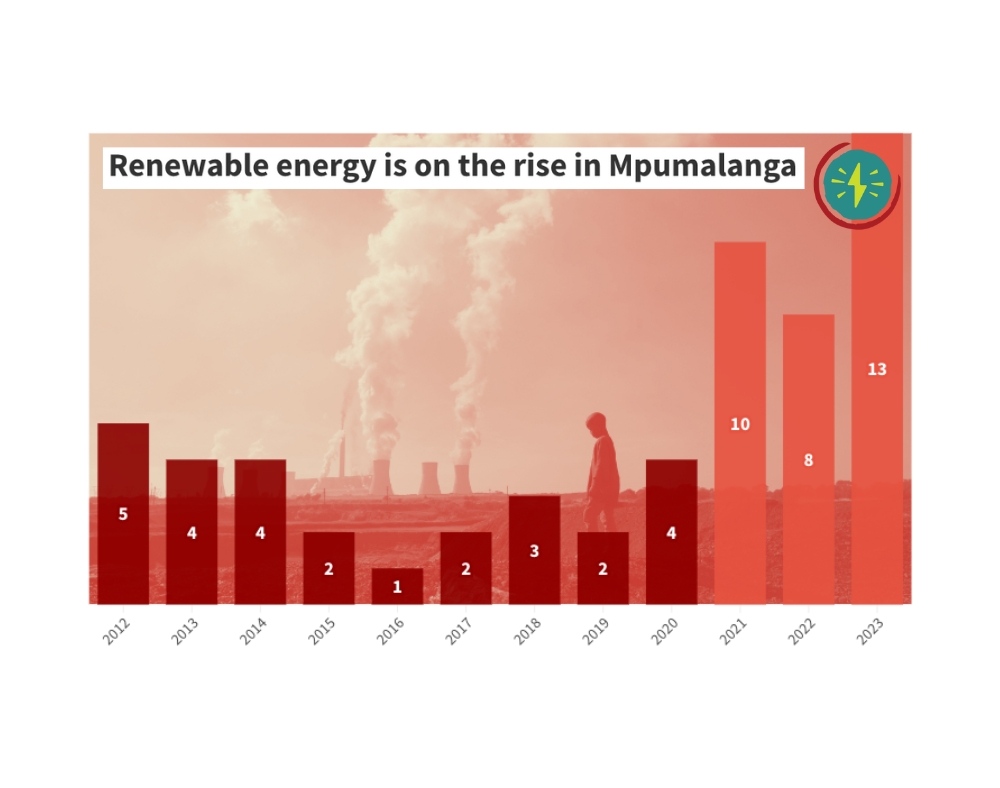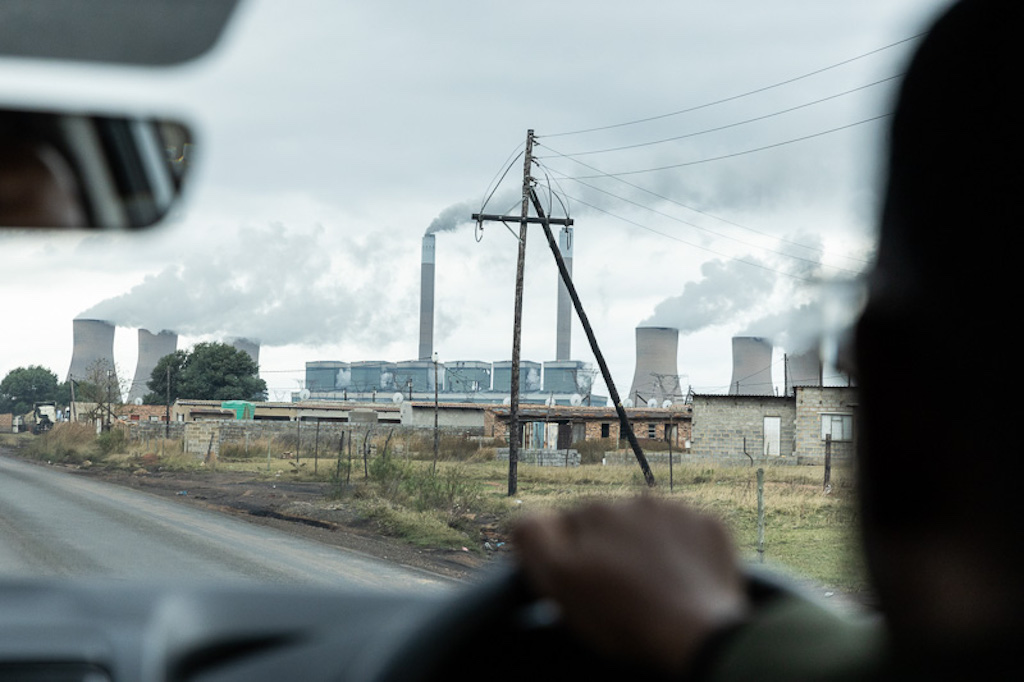
12 Oct #PowerTracker: Renewables are powering up in Mpumalanga
After a year of research, we can authoritatively confirm that renewable energy is on the rise in South Africa’s power capital. Andiswa Matikinca reports

The place where the sun rises: Most renewable projects in Mpumalanga use solar energy. Photo: Getty Images
Renewable energy projects are on the rise in Mpumalanga province, data collated and published by the newest Oxpeckers tool shows.
Teams working on the new #PowerTracker platform spent the past 12 months collecting and analysing information on renewable projects and the decommissioning of coal-fired plants in the province. This data was anchored in nine in-depth multimedia investigations published by local and international media, reaching an audience of more than 26-million readers.
Data shared at the launch of the #PowerTracker Mpumalanga tool on October 3 2023 shows that there has been a steady increase in the number of renewable projects implemented in the province since 2012, with a spike in 2021 and again in 2023.
On average, between one and five projects are implemented each year – between 2021 and 2023, between eight and 13 projects were implemented each year.
These projects total of at least 1,200MW – equivalent to about six coal power stations, if they were connected to the national grid. At least R75-billion has been invested in the projects so far, and about 35.5% of them are privately funded.
Granular details
#PowerTracker set out in December 2022 to dig into the granular details of how the Just Energy Transition (JET) is taking shape in South Africa’s energy heartland. Located in the eastern part of the country, Mpumalanga features significantly in the JET as it is piloting the transition from coal to renewable energy through the repurposing of coal power plants and coal mining lands.
About 85% of the country’s coal-mining jobs are found in the province, which currently produces 83% of the country’s coal and is home to 12 of the 15 coal-fired power plants run by the country’s energy utility, Eskom. As a result, the impacts of the coal phase-down is being felt greatly in this province, which is already impoverished and significantly affected by the environmental impacts of coal mining.
Despite initial struggles to obtain data on renewable projects (see Rating SA’s transparency on clean energy), #PowerTracker has mapped more than 104 renewable energy projects and contains information on the planned decommissioning of 12 power plants between now and 2069 as well the already decommissioned Komati Power Station.
Solar makes up most of the renewable energy projects mapped, with 67 projects. The rest of the projects are wind (16), biomass (6), hydropower (5) and there are 10 mixed renewable energy projects.
The #PowerTracker map shares basic details of these renewable energy projects, such as the ownership, capacity, type and status of each project. More granular details, including the costs involved, funding entities, funding types, mitigation value as well as social and environmental impacts can also be accessed on the map at just the click of a button.
On the map: Details of more than 100 renewable energy projects in Mpumalanga are searchable at the click of a button
Data investigations
Journalistic investigations based on this data exposed some of the biggest concerns about the transition in Mpumalanga, its shortfalls and some innovative ideas to boost it. Over the past nine months they have reached more than 26-million readers in both local and international media outlets.
In partnership with Climate Home News and the Pulitzer Center, #PowerTracker journalists journeyed to the province to investigate the shortage of skills development and training for the energy transition, a proposed way to take over Eskom’s assets post decommissioning and the pushback from South Africa’s coal lobby.

On the beat: Journalists used #PowerTracker data to investigate the decommissioning of coal-fired power stations such as Duvha. Photo: Ashraf Hendricks
Successful transition
“A successful energy transition in South Africa is an essential first step towards adapting our economy and systems to ensuring planetary survival and driving social and economic renewal,” said Sekoetlane Phamodi, director of the African Climate Foundation’s New Economy Campaigns Hub and one of the panellists at the #PowerTracker launch.
The launch took place six weeks before the 28th Conference of the Parties to the UN Framework Convention on Climate Change (COP28), where South Africa and the rest of the world will take stock of progress made in the JET.
“In order for us to advance a just, credible and accountable transition, we have to be able to monitor the new energy projects being developed and brought online as well as the coal [power] stations which are already online and are coming offline,” Phamodi said.
“It is also important for us to monitor how the investments that make this possible ultimately benefit the host communities of these new energy projects and directly tackle South Africa’s longstanding development challenges of structural and racialised inequality, unemployment and multidimensional poverty”, said Phamodi.
You can find an easy tutorial on How to use #PowerTracker here
The Oxpeckers #PowerTracker project is supported by the African Climate Foundation’s New Economy Campaigns Hub and the Centre for Investigative Journalism’s (CIJ) Open Climate Reporting Initiative (OCRI)
